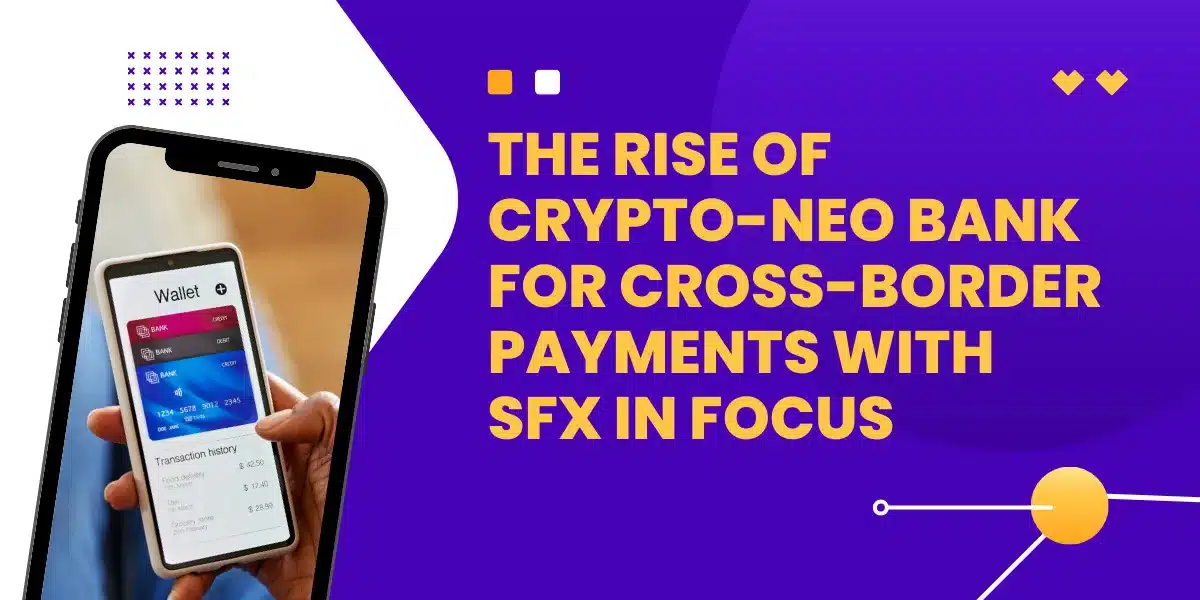Cross-border payments have historically been slow, expensive, and wrapped in layers of bureaucracy. Traditional financial institutions rely on complicated correspondent networks, frequent intermediary fees, and outdated settlement systems.
This creates heavy friction for individuals and businesses needing to send money abroad. Over the last decade, however, financial technology has begun to reshape this challenging landscape.
Among the emerging players driving this transformation is SFX, a crypto neobank that uses USDC to create fast, borderless, low-cost transfer experiences. Its rise represents a broader shift toward blockchain-powered financial inclusion, especially for underserved populations.
The Traditional Pain Points of Cross-Border Payments
International transfers have long suffered from inconsistency and inconvenience. High fees create a barrier for many users, as traditional banks and remittance services often take cuts at multiple stages of a transaction.
Settlement times can stretch from several hours to multiple days, particularly when transfers move across different financial jurisdictions. Currency volatility adds another layer of uncertainty, as fluctuating exchange rates can erode the value of money sent across borders.
Finally, the limited accessibility of traditional banking systems in many developing countries leaves millions reliant on informal or cash-based solutions that are inefficient and costly.
Together, these problems disproportionately affect migrants, international workers, and small businesses that depend on reliable payment corridors to support families or operate globally.
Fintech as a Catalyst for Change
Fintech innovators entered the global payments arena with a mission to eliminate friction and modernize the system. Early fintech solutions digitized remittance services, introduced mobile wallets, and streamlined identity verification processes.
Over time, the most transformative breakthroughs have emerged from blockchain-based solutions, particularly the use of stablecoins such as USDC. These digital dollars combine the stability of traditional fiat with the efficiency of blockchain. They maintain a 1:1 peg to the U.S. dollar, settle almost instantly across borders, reduce operational costs, and offer full on-chain transparency.
This technological foundation enables a new generation of platforms to deliver cross-border services that are significantly faster, cheaper, and more accessible than those of traditional providers.
SFX: A Crypto Neobank Platform Built for Global Inclusion
Among the fast-rising platforms in this category, SFX has established itself as a promising solution for regions where traditional financial systems fall short.
Built for Africans in diaspora, SFX directly addresses real-world challenges such as currency instability, high remittance fees, and restricted access to global banking products.
USDC at the Core of the SFX Experience
SFX integrates Circle’s USDC to enable anyone in the world to hold, use, and interact with stablecoins for cross-border payments. By utilizing USDC on-chain, the app allows users to store value securely in a stable digital currency, avoid the unpredictability of local exchange rates, transfer money internationally within minutes, and convert balances into local accounts at low cost.
For migrants and families who regularly send financial support across borders, this stability and speed offer a level of predictability rarely found in traditional systems.
Empowering the African Diaspora
One of SFX’s most notable achievements is its growing reach among Africans in diaspora, enabling users to send and receive money without relying on slow or expensive remittance shops.
SFX provides a free digital wallet, almost zero-fee deposits from supported African countries, rapid transfers, and a straightforward mobile interface. It also offers a practical way to build savings in USD, a particularly valuable feature in countries facing inflation or currency devaluation.
By storing money in USDC, users can protect their earnings from local economic instability and participate in global digital finance without requiring traditional bank accounts.
Bridging On-Chain Money With Real-World Spending Through Virtual Cards
Quite notably, SFX launched its virtual cards in October, offered by Visa Principal Partner, further expanding the utility of its digital ecosystem. These cards allow users to spend their USDC balance, anywhere Visa is accepted, on real-world online services, including shopping platforms, subscription services, and international marketplaces.
This evolution positions SFX not just as a remittance tool but as a full financial empowerment platform, giving users globally usable purchasing power derived from digital assets
The Future of Cross-Border Fintech
The momentum behind crypto neobanks, fintech, and blockchain-based payments shows no signs of slowing. If current trends continue, SFX will redefine global money movement entirely. The combination of stablecoin infrastructure, mobile-based accessibility, and low-cost settlement positions SFX to dominate the next generation of international payments.
Its rapid user growth underscores the demand for modern financial tools, especially in emerging markets where traditional systems fall short.
Conclusion
Fintech is dismantling the barriers that have long hindered efficient cross-border payments. SFX, with its USDC-driven architecture, stands at the forefront of this transformation by offering faster, more affordable, and secure ways to move money globally.
As stablecoins become increasingly integrated into mainstream commerce and digital banking ecosystems, SFX could play a key role in democratizing access to financial services, connecting continents, stabilizing personal finances, and empowering millions.

